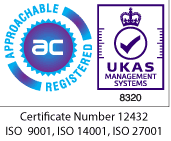Mergers and Acquisitions: Culture and People
Readiness and Resilience
It is inevitable that an acquisition, merger, or divestiture will significantly change the structures, processes, department structures, and job profiles of both the buying and selling organisation. In order to properly monitor this it is important to fully integrate both Human Capital Management (HCM) systems and people into the TSA process, design, and delivery.
There are certain obvious elements that show up throughout the TSA, such as payroll transfer, employee data transfer, HR systems transition, and the transition of other HCM applications that guide the employee life-cycle. Less obvious is the need to measure the readiness and resilience of transferring personnel and those departments affected by the integration.
This requires a keen and consistent timeline throughout the life-cycle of the TSA. We usually recommend snapshots at 30, 60, and 90 days, however the full integration after acquisition can take as long as 24 months. Measuring workforce resilience at regular intervals will give the board of the acquiring employer a reality check by providing metrics that reveal the likelihood of achieving a successful implementation.
We also recommend using a system to measure workforce resilience prior to starting your integration. This system should provide statistically verified data on organisation, functional, department, team, job profile, and individual levels. Management dashboards based on this data provide insight and root cause analysis for underlying problems. The best systems also offer after-care support on a company and individual level, but we will return to ways you can maintain employee morale later in the article.
Culture Shock
Though merging two business cultures is oft-cited as huge factor throughout M&A, it is one that is typically, poorly understood and implemented. One particularly disastrous example is that of Amazon’s purchase of Whole Foods in the US, demonstrating what happens when two diametrically opposed cultures clash with little or no planning for integration.
Employees vote with their feet, and if you fail to handle the integration process adequately you will face staff shortages and a loss of critical expertise and knowledge. As aforementioned, low employee experience occurs when companies do not understand change readiness levels and workforce resilience. Thus, establishing a baseline is essential to planning a migration and subsequently monitoring its success rate during the migration. These two metrics can also impact the reliability of the succession plan and talent pipelines.
Transferring employees must know what kind of environment they are stepping into. As the acquiring company, you must try to eliminate potential psychological factors that might make new employees feel at risk or uncertain about their future. These can be eliminated by a strong communication strategy, and the easiest to spot are concerns regarding:
- Job security
- Clarity about the new company culture
- Organisational change effectiveness
- Change in management
- Introduction to new colleagues
- Adapting to new systems that drive ‘old’ processes and procedures into a new standardised environment
- Getting used to working in new locations and any additional commuting time or stress from moving their home
These are just a small list of HCM items that ought to be taken seriously throughout the transformation and integration process. Early involvement of your workforce throughout this transition will support improved employee experience, workforce resilience, and retention. It is imperative to address all of these concerns via a communication process that includes one-to-one interviews and a positive introduction to a new company culture.
Incentives and Interviews
This positive introduction can be secured by giving special attention to retaining those employees that are intricately involved in implementing the transition while unaware of the extent of their job security beyond completion. Not only can such levels of uncertainty can quickly and drastically impact morale, thus leading to higher levels of attrition, but the cost of replacing an employee can set your organisation back by an average of six months. Luckily, there are two main ways to mitigate this:
Incentives: There are a number of ways to incentivise employees throughout a transition, such as offering a retention bonus to persuade employees to stay, as well as more long-term benefits such as retirement plans. Both of these demonstrate and prove proper care for employees.
Another way to ensure this is through a strong benefits programme, including incentives such as paid vacation, meal breaks, social security, health insurance, perks and bonuses, achievement awards, employee allowances, and room for pay raises.
This can be further substantiated by offering opportunities for upskilling and reskilling. Employee anxiety can be escalated within duplicate roles, and thus it is important to remind those affected that their skillsets are still an asset to the company. This can be achieved by offering to train them for new roles that might better suit them under new arrangements. This displays a willingness to invest in the development of your employees, and in return they will pay back your organisation in loyalty and productivity.
Interviews: Incentives are one thing, but of course the best way to achieve a strong narrative for communication is exactly that: communication. This can be carried out through 1-to-1 interviews with new employees in order to assess their expectations. It is important to start this early: send a senior leader to the seller once announcements have been made and conduct these interviews. It is also worth producing a presentation to the group that reinforces your narrative.
Calculating Cost
Another significant benefit for fully integrating the HCM framework into the design and development of your TSA is to build in a critical and complete review and understanding of the total rewards cost of the acquired workforce. This includes an acknowledgments of the employees relations conditions that are in-place and conducting a litigation review. In Europe, the TSA needs to accommodate and comply with the Transfer of Undertakings Protection of Employment (TUPE) legislation (as well as other legal considerations which will be covered shortly).
An establishment of the total rewards cost and litigation review is now considered an essential part of the TSA process, and should include:
- The structure of employment contracts in place, both permanent and fixed term;
- Contractual elements that have been arranges in the employment contracts;
- Collective labour agreements with, for example, work councils;
- A CLA in place to drive employee relations and the format of employment contracts;
- Review on probation practices;
- Excess notice periods agreed shortly before the acquisition;
- Compensation practices and guidelines;
- Benefits practices and guidelines and their financing mechanisms; and
- Practices that deviate from normal practices.
What Can Go Wrong?
As aforementioned, there are also numerous legal issues to consider, which are just as important throughout M&A processes as financial issues. One easy way to mitigate these is by hiring an M&A lawyer to avoid the threat of litigation.
One responsibility of the M&A lawyer is to conduct a litigation review. This should concentrate on a variety of events that can be identified while employing a workforce, including:
- Liability for staff on long-term absence;
- Staff dismissal procedures (such as an industrial tribunal);
- Grievance history reviews;
- Staff H&s litigation cases;
- Redundancy programmes history review;
- Redundancy litigation cases;
- Minimum wage compliance;
- Meeting GDPR standards and compliance/regulatory standards; and
- Any code of conduct or SOX litigation cases.
This, along with the financial obligations outlined in the previous section, may seem like a lot to cover, but acknowledging them early will save an unmeasurable amount of time, money, and stress throughout the process as a whole.
To find out more about our M&A services, go to our M&A homepage.
If you have a specific question or would like to talk to one of our experts, please get in touch.
About Cambridge Management Consulting
Cambridge Management Consulting (Cambridge MC) is an international consulting firm that helps companies of all sizes have a better impact on the world. Founded in Cambridge, UK, initially to help the start-up community, Cambridge MC has grown to over 150 consultants working on projects in 20 countries.
Our capabilities focus on supporting the private and public sector with their people, process and digital technology challenges.
For more information visit
www.cambridgemc.com or get in touch below.
Contact - Africa
Subscribe to our Newsletter
Blog Subscribe
SHARE CONTENT











